The Elm Project, Part 3: Cedar Elm vs. Winged Elm
CEDAR ELM (Ulmus crassifolia) vs. WINGED ELM (U. alata)
These two elms also drove me crazy for a while! In a better, simpler world, all elms with wings would be Winged Elms, but this is not the case. These both can have corky “wings” on their twigs, so despite the name, you can’t identify a Winged Elm by these alone. Both of these elms have small leaves, asymmetrical bases and (usually) double-toothed margins. However, Winged Elm usually has many winged twigs, while in Cedar Elm they occur mostly on young trees, and many large Cedar Elms have none at all. The ranges of these two overlap, and Cedar Elm’s range includes the eastern half of Texas. In North Central Texas, cedar Elm is much more common than Winged Elm. Winged Elm’s range covers only the eastern quarter of Texas, so only part of North Central Texas. The trees range as far west as the East Cross Timbers region, which cuts through Denton and Tarrant counties. Winged Elms prefer sandy soil and do not grow well in clay. We find them quite commonly east of the metroplex, but rarely, if ever, in the Blackland Prairie area. In west Denton county, where we get into the Cross Timbers area, we’ve found quite a few.
The most sure-fire way of distinguishing these two is seasonal: Cedar Elm is the only native elm that flowers in the fall, while Winged Elm flowers in the spring. In North Texas, the small, round samaras of Cedar Elm are evident through most of September, and often hang on even later.
-- Here's an observation showing the autumn samaras of a Cedar Elm:
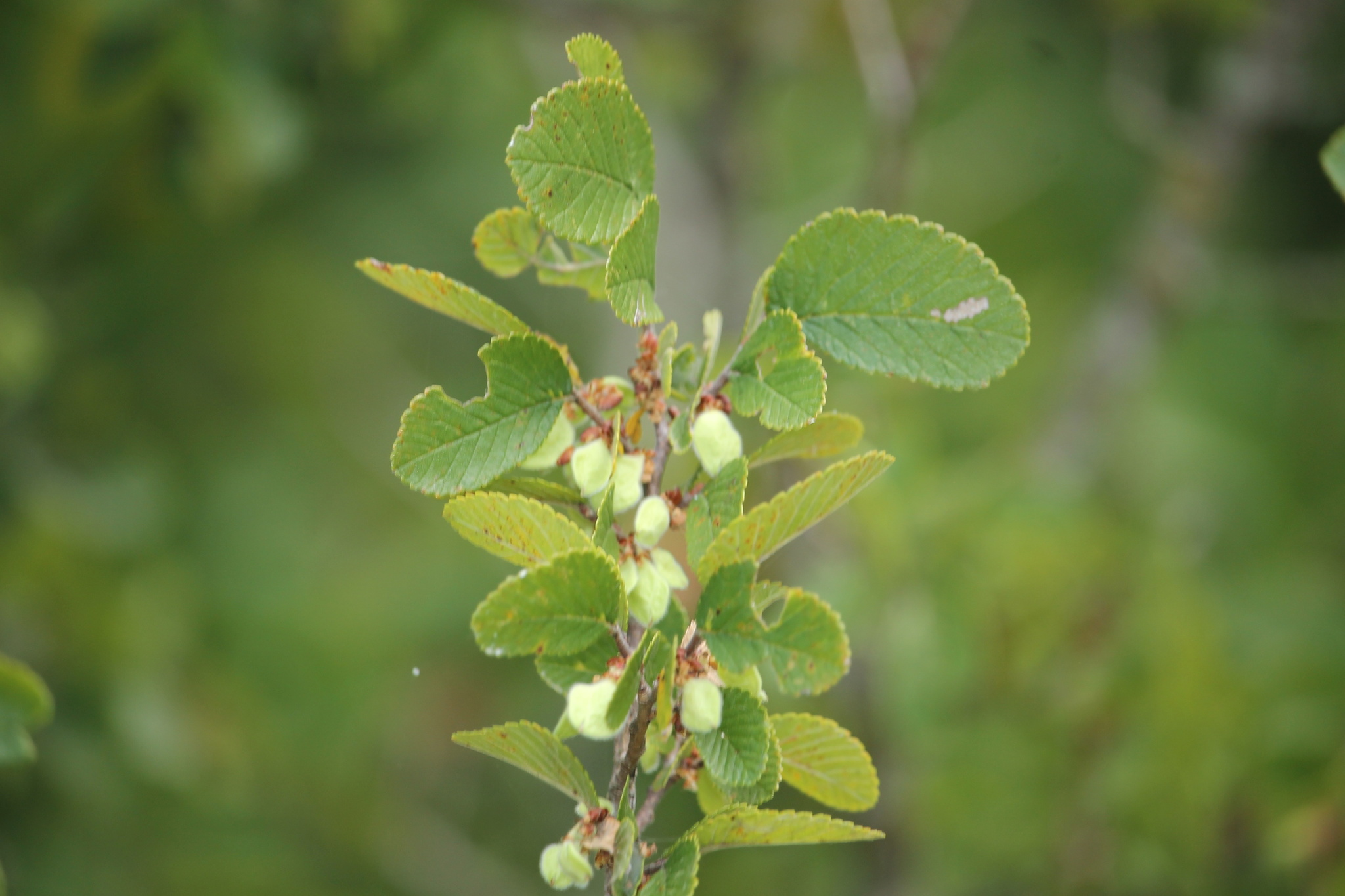
- Winged Elm produces flowers and seeds in the spring, around March, before the leaves appear. Winged Elm is the only elm in North Texas that has corky wings on branches AND makes its seeds in the spring. Here are the spring samaras of a Winged Elm:
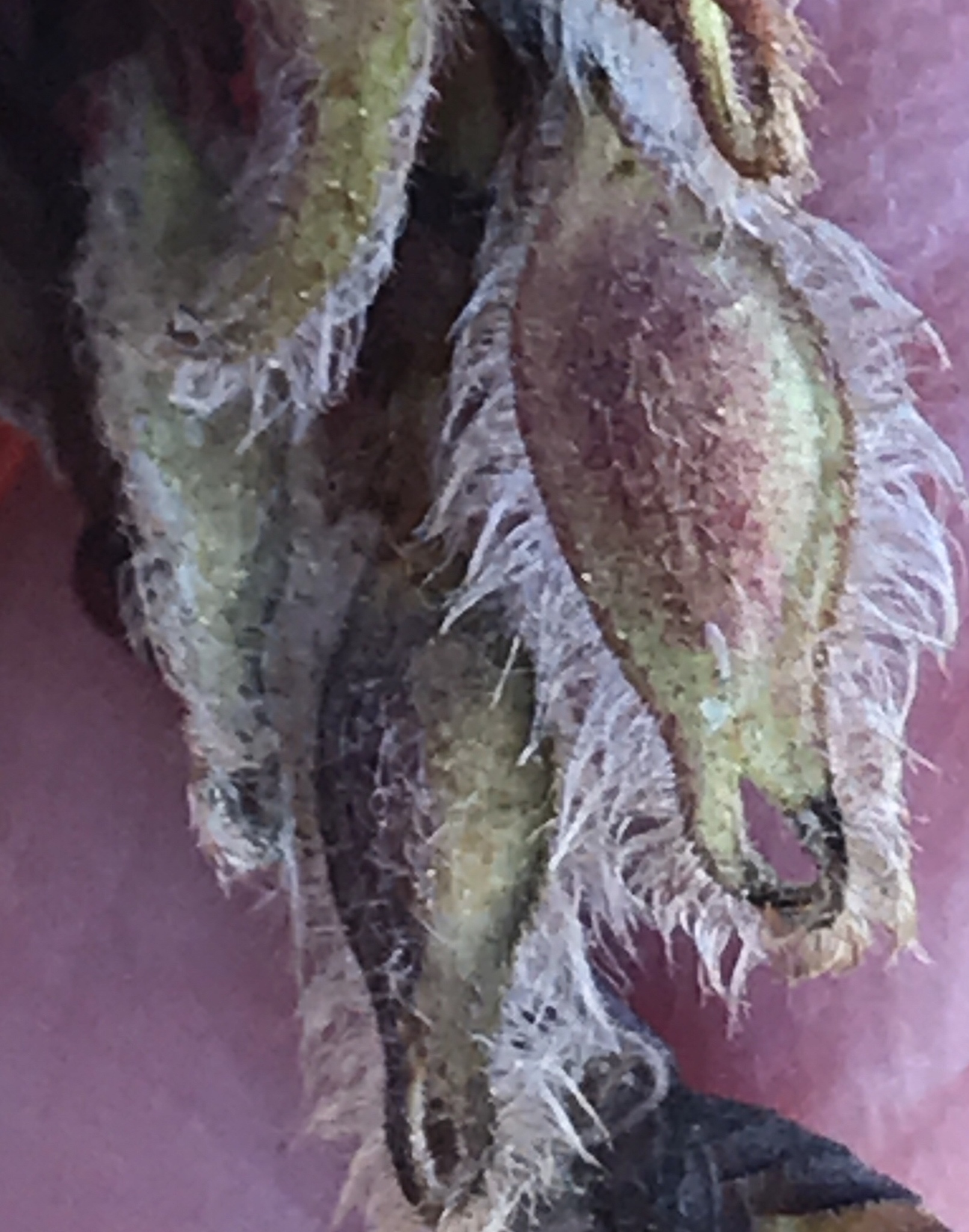
- For the rest of the year, Cedar Elm leaves tend to be somewhat smaller than those of Winged Elm, and have a blunt tip. Cedar Elm leaves are also stiff and thick, while Winged Elm leaves are thinner and smoother on top. That’s hard to see in pictures, but it’s pretty obvious when you handle the leaves.
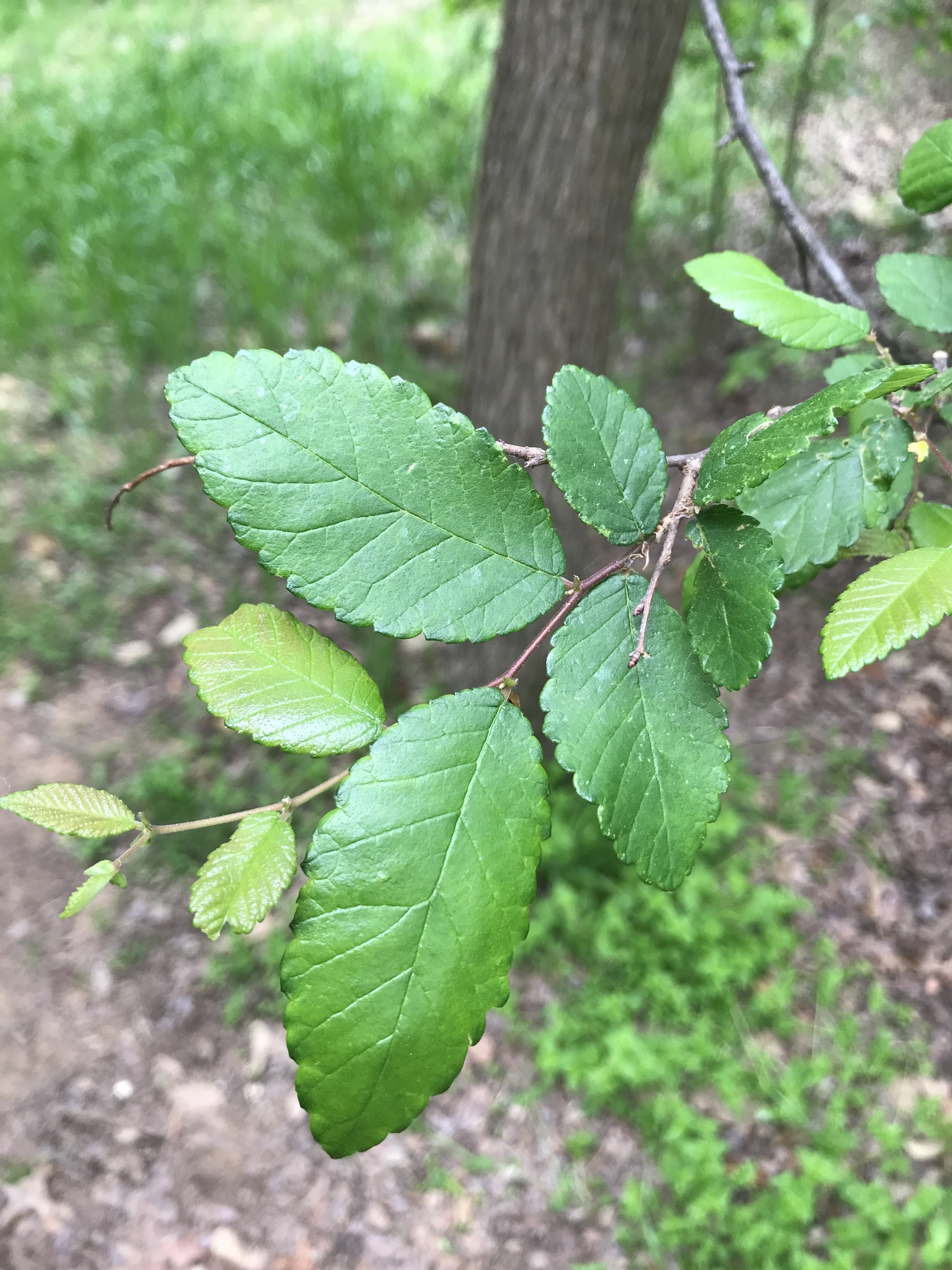
- The leaf shape differs: Cedar Elm leaves (above)are more rounded or blunt at the tip, while Winged Elm leaves (below) are pointed at the tip. Here's a picture of a Winged Elm twig with leaves:
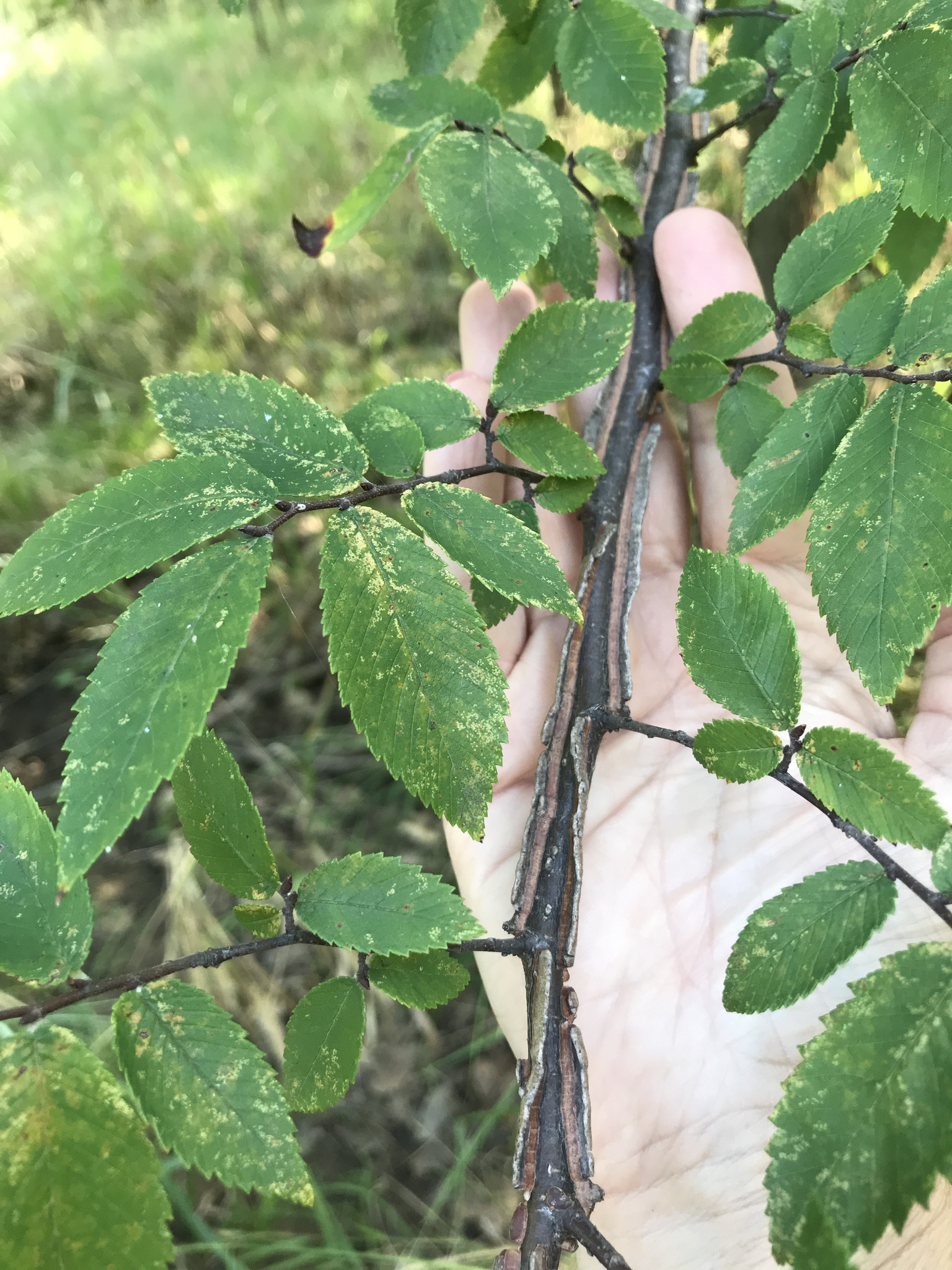
- Winter twigs: the twigs of Winged Elm are redder, and the buds are larger.
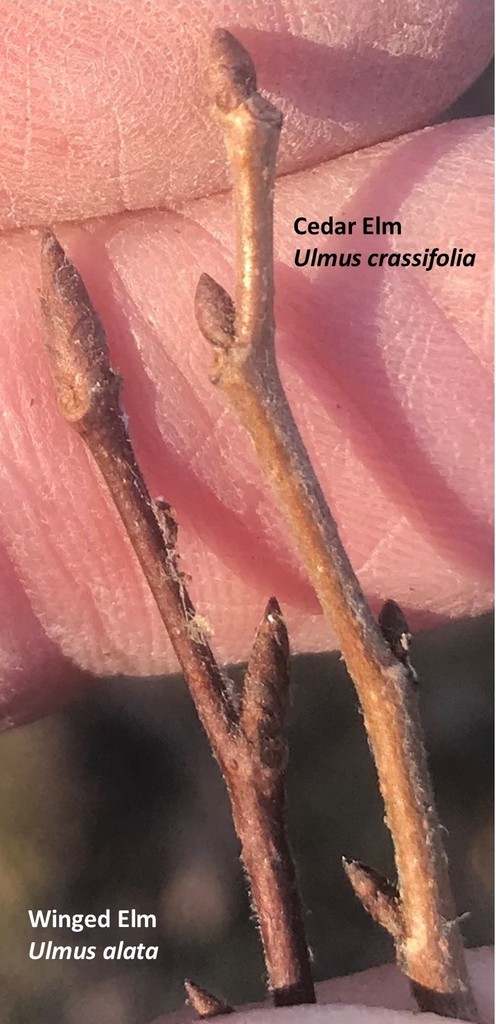
The flowers and samaras of Winged Elm, like those of American Elm and Slippery Elm, appear in the spring before leaves open. They are fuzzy on both front and back surfaces, as well as having fine hairs extending from the margins. The samaras aren’t tightly clustered like those of the Slippery Elm, but don’t droop on long stalks like those of American Elm either.
• Here’s a picture of Winged Elm samaras, with cilia around the margins AND fuzz on the front and back surfaces:
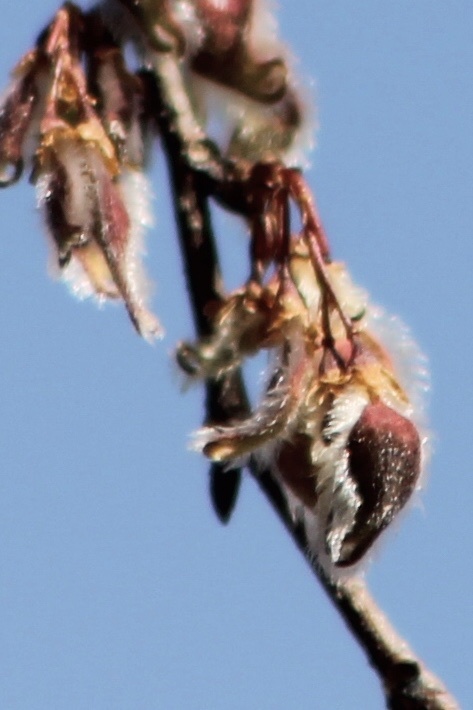







Comments
Thanks for putting this together, I always have problems with elm identifications.
You're welcome @annikaml -- it's helps me keep it all straight, too!
Excellent work
One of my early rude awakenings is that they both Cedar Elm and Winged Elm had winged twigs when young. Oh, darn! Thanks for the additional info. I'll charge out into the woods now to see which is now flowering - and which aren't. Keep up the good work.
Thank you!! I am often trying to find a true winged elm and this will definitely help me identify a true winged elm.
Add a Comment